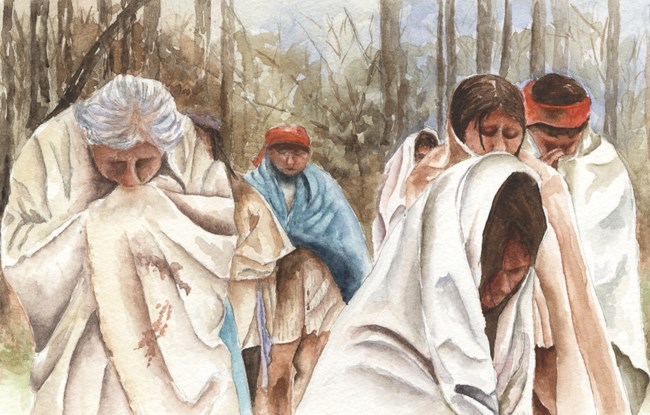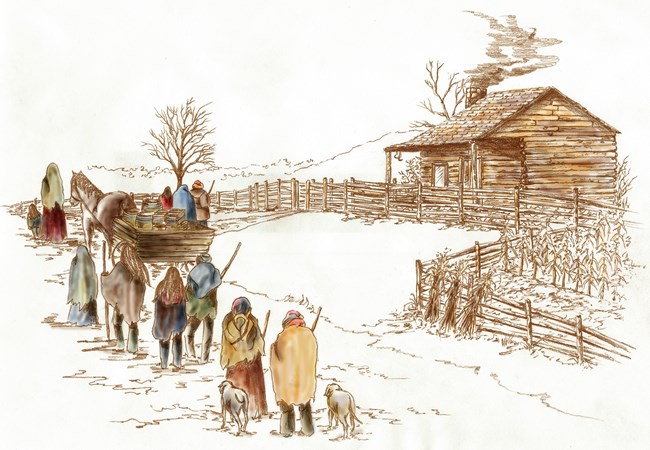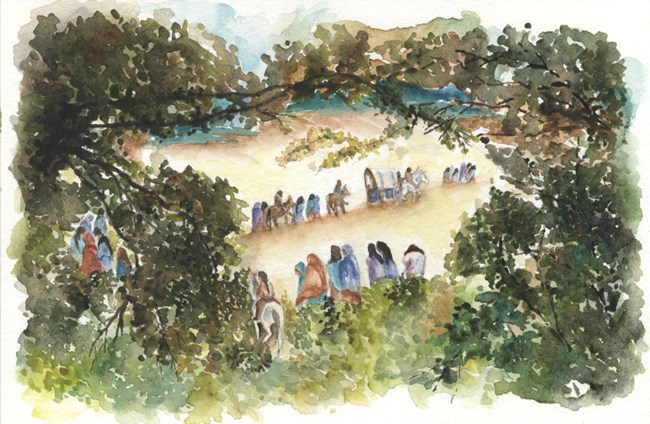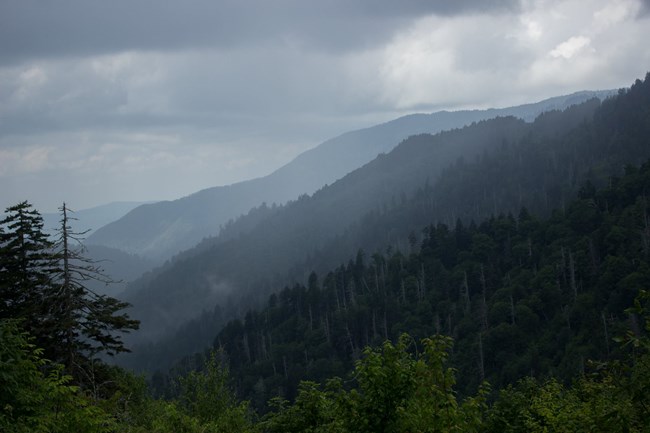
Watercolor by Cookie Ballou 
Artwork by Sam Watts-Kitts An estimated 4,000 Cherokee, especially the old, the young, and the infirm, died during the 800 mile journey. Harsh weather, poor food supplies, and illness affected the travelers. The tragic relocation finished in 1839. The surviving Cherokee proved resilient. They reconstructed their lives and rebuilt their nation. This is a story of racial injustice, intolerance, and suffering, but it is also one of tenacity and survival. 
Wikimedia Commons Oct.25, 1837. Marched at 800 buried Andrews child at 9 ½ oc. A.M. Passed through Murfreesboro and arrived at overalls Creek 4oc. P.M. 14 miles today. Issued corn and fodder. Capt. B.B. Cannon 
Watercolor by Cookie Ballou Cherokee Nation 
Photo by Ava Joiner About a thousand Cherokee in Tennessee and North Carolina escaped the roundup. They gained recognition in 1866, establishing their tribal government in 1868 in Cherokee, North Carolina. Today, they are known as the Eastern Band of Cherokee Indians.
To learn more and watch a film about the Trail of Tears visit: https://www.nps.gov/trte/learn/photosmultimedia/dvd.htm |
Last updated: September 9, 2025
